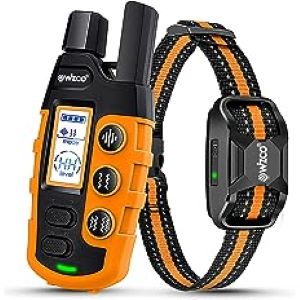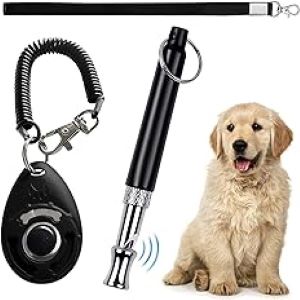Embark on a journey into the mechanics of dog training collars, unraveling the technology and methods behind their effectiveness. Explore how these collars work to aid in canine training, emphasizing responsible and humane usage.

Key Takeaways
You Might Also Like:
What Is a Training Collar?
A dog training collar is a device designed to assist in training dogs and modifying their behaviour. It is also commonly referred to as an electronic collar, e-collar or remote training collar. The collar typically consists of a receiver unit that is worn around the dog’s neck and a handheld remote control operated by the dog owner or trainer.
Dog training collars deliver various stimuli or signals to the dog when triggered by the remote control. These stimuli can include vibrations, tones, or electronic stimulation. The purpose of using these stimuli is to provide immediate feedback to the dog and reinforce desired behaviours or prevent unwanted behaviours.
These collars incorporate a radio-controlled electronic device and are worn around the dog’s neck. The mechanism behind shock collars involves inflicting varying levels and duration of pain, which generates fear.
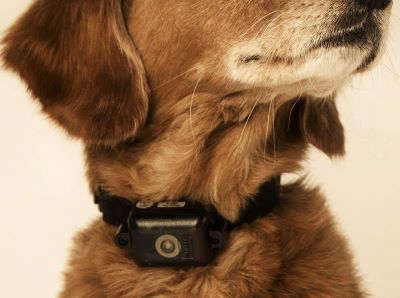
Some models of shock collar models offer additional features such as a tone or vibrational setting. This is used as an alternative or in combination with the shock. Certain advanced collars include internet mapping capabilities and GPS functionality to track the dog’s location or notify the owner.
Originally, e-collar training was used to train hunting dogs, but in recent years, some dog owners have used it to correct unwanted behaviour in their dogs.
How Does a Training Collar Work?
Electric training collars employ a radio signal to deliver a mild stimulus sent via remote control to a receiver collar worn on the dog’s neck. The stimulus distracts the dog with an unpleasant sensation, similar to the static shock.
The sensation startles the dog and is briefly unpleasant, but it does not harm it. This gets the dog’s attention to help the dog refocus. The stimulus also helps to correct behavioural issues such as nuisance barking, digging and chasing.
Dog training collars commonly require 2 main components to work: the remote transmitter and the collar receiver.
The Remote Transmitter
The remote transmitter sends the signal to the receiver, which rests on the dog’s neck. The transmitter is controlled by the owner from an accessible range of distance. The distance depends upon the wireless system built into the e-collars.
If you are training your pet in a small area then the distance range of 70-300 m would be a good option. But, if the training is for your running or working dog, then the distance range of 300 m or above is advisable.
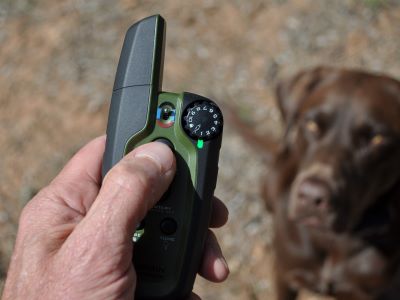
There are buttons on the remote. This helps to control the stimulation. The stimuli can be increased or decreased as per the behavioural pattern of your dog. It can be a tone, vibration or static pulse.
The Collar Receiver
The receiver collar that your dog wears reacts to the radio signal from the remote transmitter. On receiving the signal, it activates the stimuli.
The stimulation is delivered through the two small metallic prongs attached to the receiver collar. These prongs need to be properly placed and should lightly touch your dog’s neck. It is strongly recommended that you learn how to properly fit the receiver collar to your dog.
Pros of Training Collars
Amidst the bad reputation of training collars, there are some advantages to using them. The primary one is to fix the behaviour of your dog. You can easily train him by using a remote controller and giving the slightest stimulation.
You might have experienced unwanted screaming and time delays in training your dog. But at last, all in vain! Thus with the help of these collars, you can easily control and train your dog even when you are not around.
You might have also experienced your dog running away wildly behind something. In such cases, your verbal commands are of no use as the dog won’t be able to hear you. The training collar here will get his attention and cause him to stop the bad behaviour. This is also helpful for those dogs who don’t respond to voice commands.
Training collars are very beneficial when your dog does not get trained properly. Bad behaviour like barking after someone or digging can really cause trouble in the neighbourhood. People may get irritated and eventually start hating you and your dog. Also, your dog could pose a danger to people around him.
Moreover, shock collar training doesn’t even require your presence to use. You can use a remote control to give your dog a gentle shock. Finally, e-collars are affordable training tools that cost much less than the services of a professional trainer.
Cons of Training Collars
While there are some advantages of E-collars, the disadvantages outweigh them. It is important to train a dog with positive reinforcement. This will give you a gentle, safe and positive environment to your dog.
An E-collar instils fear, anxiety, and aggression in a dog. It also causes physical pain, injury, and psychological stress. Studies and experiments have also proven that “The reward-focused training was, indeed, more efficient than methods which included potentially aversive stimuli such as electric stimuli or excessive lead pressure.”
In addition to that, e-collars can undergo malfunctioning, which can lead to no current or excess flow of current. This could harm the dog or can even shock the dog to death. Such incidents are really dreadful and dangerous.
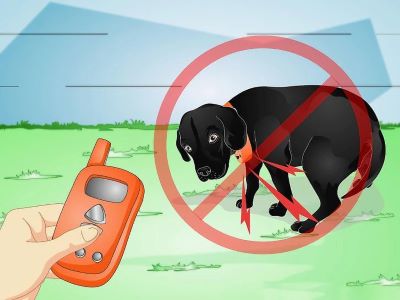
E-collars are initially not recommended to train a dog. This is because these collars can pose a serious threat to your dog. It is strictly advisable to train your dog normally with verbal commands or using safe and gentle collars like pulling or directional collars.
Many organisations in the UK as well as other parts of the world work against the training collars and have imposed actions to ban these collars.
According to Hannah K. Scott and Mark Cogburn, in the research at the National Library of Medicine:
“Reinforcement and punishment both work independently, as well as together, as part of a behaviour plan. Positive reinforcement works exceedingly better and faster than punishment.”
FAQs
What is the best age for an e-collar?
It is generally recommended to start e-collar training for puppies when the dog is at least 6 months old.
How long does it take to train a dog with an e-collar?
Basic commands like “sit” or “stay” may only take a few weeks, while more advanced tasks such as agility training, service dog training, or search and rescue can take several months or even years.
Is e-collar banned in the UK?
The government has laid legislation that will completely ban the use of remote-controlled electric shock collars in England, as of 1 February 2024, following a ten-year campaign to #BanShockCollars.
What are the side effects of e-collars?
Shock collars can cause dogs physical pain, injury (ranging from burns to cardiac fibrillation), and psychological stress, including severe anxiety and displaced aggression.
How long should an e-collar be worn?
On average, most dogs can wear the collar for 8 -10 hours per day without developing skin problems. But it is always important to relocate the receiver after a few hours of wear to reduce any likelihood of problems developing
Summary
To wrap up, e-collars are a good option to train your dog. However, it is always recommended to start with positive reinforcement. In cases where your dog has been trained for years and still does not follow your commands, a training collar might serve as your last option.
While using e-collars it is advisable to maintain the stimuli at its low or up to a certain point. High intensity can be cruelty to dogs. Thus, you should always consider your dog,s mental as well as physical state before picking up e-collars.
Moreover, make sure to buy high-quality e-collars which are safe and durable. This can reduce the chances of malfunctioning. It’s also essential to adjust the training once your dog’s behaviour has changed.
